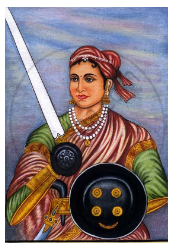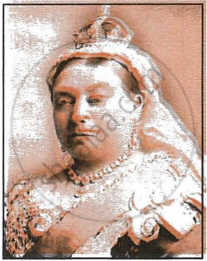Advertisements
Advertisements
Question
| The Indian Rebellion of 1857 was a major uprising against the rule of the British East India Company, which functioned as a sovereign power on behalf of the British Crown. With reference to this, answer the following question: |
How did the failure of this Revolt impact the Mughals and the Peshwas?
Solution
With the death of Bahadur Shah II, who was deported to Yangon, the Mughal dynasty came to an end. Nana Saheb, the last Peshwa, had taken an active part in the uprising and had fled to Nepal after the failure of the uprising. So the office of the Peshwa also came to an end. Thus ended two of the most formidable foes of the British - the Marathas and the Mughals.
APPEARS IN
RELATED QUESTIONS
Answer the following question in one or two words/sentences:
Mention any two important results of the Revolt.
Answer the following question briefly:
In the context of the Revolt of 1857, briefly discuss:
The decline of the Mughal dynasty
Answer the following question briefly:
In the context of the Revolt of 1857, briefly discuss:
Any four results of the Revolt of 1857
This is the picture of the queen who led the Revolt in Central India.

What was the major outcome of the Revolt of 1857?
Give a reason why:
State of Awadh was annexed by the British.
The Revolt of 1857 was the beginning of the independence struggle against the colonial rule of the British. With reference to the consequences of the Revolt, answer the following:
Mention any four changes made in the army after the Revolt.
| The Indian Rebellion of 1857 was a major uprising against the rule of the British East India Company, which functioned as a sovereign power on behalf of the British Crown. With reference to this, answer the following question: |
The India army was reorganised after 1858, to prevent the reoccurrence of another uprising. Analyse this statement by stating any four changes made in the army after the Revolt.
State any two consequences of the disbanding of the armies of the annexed States by the British.
Study the picture and answer the following questions:

- Identify the person in the picture. Name the proclamation made by her in 1858.
- Where and by whom was this proclamation made public?
- What assurance did this proclamation give to the Indian people regarding
- religious freedom and
- appointment to public offices?
The Great Outbreak of 1857 brought about important changes in the character of Indian administration and the future development of the country In this context, discuss:
- The changes introduced in the administrative set-up of the British territories in India.
- The changes in the Army.
- The changes in the relationship with the Princely States.
